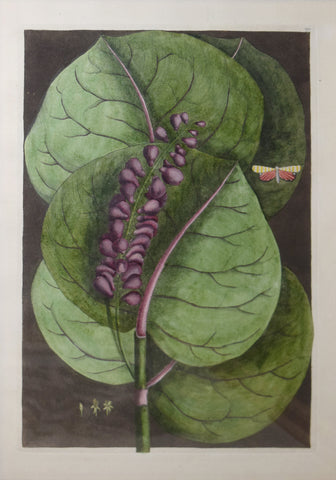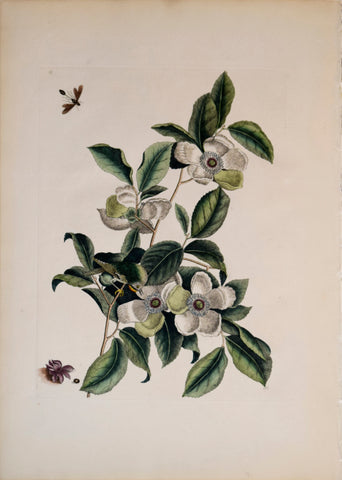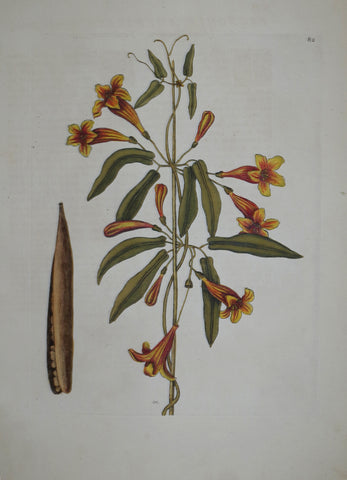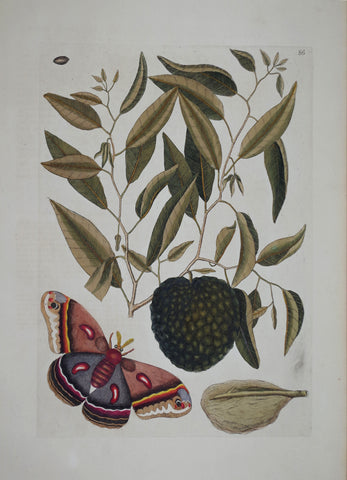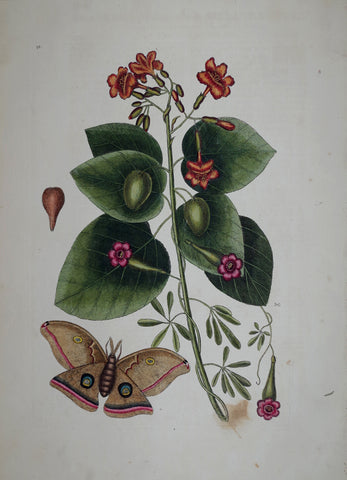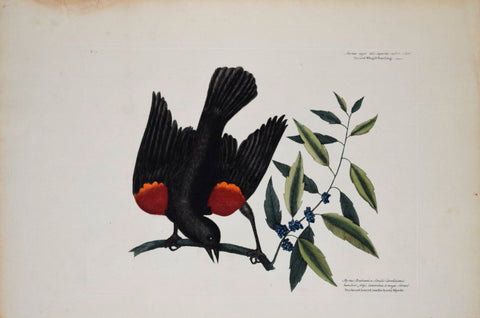
Mark Catesby (1683-1749), T13-The Red Wing'd Starling
Mark Catesby (1683-1749)
T13-The Red Wing'd Starling
from Natural History of Carolina, Florida and the Bahama Islands..., Volume 1
Published, London, 1754, Second edition
Engraving with hand coloring
Image size: 13 1/2 x 20 1/4"
Ref: Anker, Bird Books and Bird Art, 95
Currently known as the red-winged blackbird, Agelaius phoenicus, and southern bayberry, Morella caroliniensis*, Catesby described these subjects as follows:
STURNUS NIGER ALIS SUPERNE RUBENTIBUS.
The red-wing'd starling.
A Cock weighed between three and four ounces, in shape and size resembling our Starling. The whole Bird (except the upper part of the Wings) is black, and would have little beauty, were it not for the Shoulders of the wings, which are bright scarlet. This and the Purple-Daw are of the same Genus, and are most voracious corn-eaters. They seem combined to do all the mischief they are able: and, to make themselves most formidable, both kinds unite in one flock, and are always together, except its breeding-time, committing their devastations all over the Country. When they are shot, there usually falls of both kinds; and before one can load again, there will be in the same place oft-times more than before they were shot at. They are the boldest and most destructive Birds in the Country. This seems to be the Bird Hernandez calls ACOLCHICHI, Will. Orn. p. 391. They make their Nests in Carolina and Virginia not on trees, but always over the water, amongst reeds or sedge; the tops of which they interweave very artfully, and under fix their Nests; and to secure from wet, that where the Tides flow, it is observed never to reach them. They are familiar and active Birds, and are taught to talk and sing.
The Hens are considerably less than the Cocks, of a mixed gray, and the red on their Wings not so bright.Myrtus Brabanticae similis Caroliniensis humilior; foliis latioribus & magis ferratis: The broad-leaved Candle-berry MYRTLE.
This grows usually not above three foot high; in which, and its having a broader leaf than the tall Candle-berry Myrtle, it principally differs from it.
We Also Recommend

